Winter is here and with it comes a range of health and safety considerations. It’s important to be prepared for the cold weather and the outdoor activities it brings. Make sure to bring the right First Aid supplies and take measures to stay warm.
To make sure you and your First Aid kit are ready for winter, here are some things to consider:
- Have a First Aid kit on hand that is stocked with the appropriate items.
- Take the necessary precautions to keep warm when you’re out in the cold.
- Be aware of any potential weather-related risks, such as hypothermia or frostbite.
- Review your knowledge of First Aid in case of an emergency.
Staying Warm
It is essential to think about staying warm in winter. To brave the cold, put on multiple layers of clothing made from materials like wool or synthetic fleece (as cotton loses its insulation properties when wet).
To stay warm, wear a hat, coat, scarf, gloves and warm boots or shoes when temperatures drop. People with heart or respiratory problems should avoid going outside in extreme cold.
If possible, the temperature inside your home should be kept at or above 18°C through the use of a heater or fireplace. If that isn’t feasible, try to keep the living room warm and heat the bedroom before bedtime.
Additionally, consuming a warm, nutritious soup every day is an excellent way to stay healthy and warm in the winter!
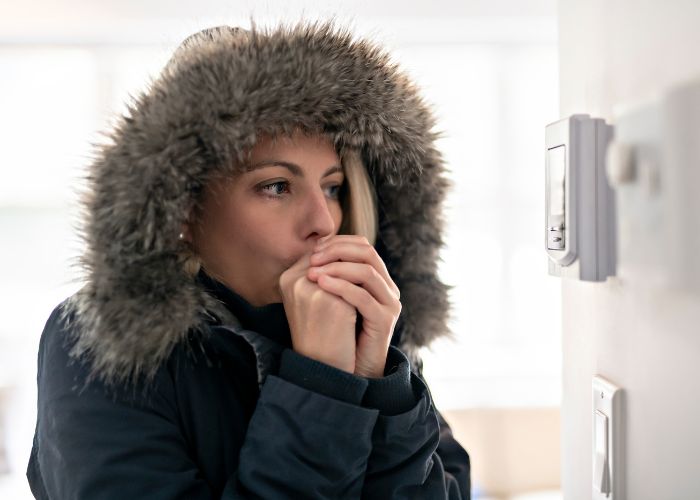
The Layering System
You’ve likely heard of layering your clothing, or what some people call the ‘layering system’.
It’s a way of keeping warm, dry, and comfortable when the conditions you’re in vary. You can add or remove layers depending on how you feel. All the items should be light and packable, so they fit in your rucksack when not in use.
Don’t assume that when the temperature drops, you should wear the thickest clothes possible. Most mountain climbers, runners, cyclists, hill walkers, and dog walkers actually benefit from varying their layers.
Carrying extra layers in your rucksack keeps you safe. The weather may be mild when you leave, but as you get higher into the hills, the temperature can suddenly drop, and conditions can change quickly.
The layering system consists of three layers to help regulate your body temperature and keep you comfortable in any weather.
The base layer wicks away moisture from your skin. The mid layer traps heat generated by your body and can range from a fleece to a down jacket, depending on the temperature. The outer layer is your protection from the elements; a waterproof jacket in the rain or an insulated jacket in the cold and dry.
Hypothermia
Hypothermia is a serious decrease in body temperature below 35°C (normal body temperature is approximately 37°C). It is a medical emergency that requires hospital treatment.
Signs of hypothermia include:
- Shivering, cold and pale skin which may turn blue or grey on dark skin tones (particularly visible on palms and soles of the feet).
- Slurred speech
- Slow breathing
- Fatigue and confusion.
Other signs of hypothermia can include loss of coordination, clumsiness, memory problems, and a decrease in the body’s overall energy.
If left untreated, the individual may become drowsy or even unconscious. In severe cases, the heart rate and breathing may become dangerously slow, and the person may even go into cardiac arrest.
It is important to seek medical attention immediately if you suspect someone is experiencing symptoms of hypothermia.
What Causes Hypothermia?
Hypothermia can be caused by a number of factors, such as not wearing sufficient clothing in cold weather, remaining outdoors for too long, falling into cold water, having wet clothes, or living in a cold house – particularly those living alone.
Older individuals are particularly at risk for hypothermia. For more information, please visit the NHS website.
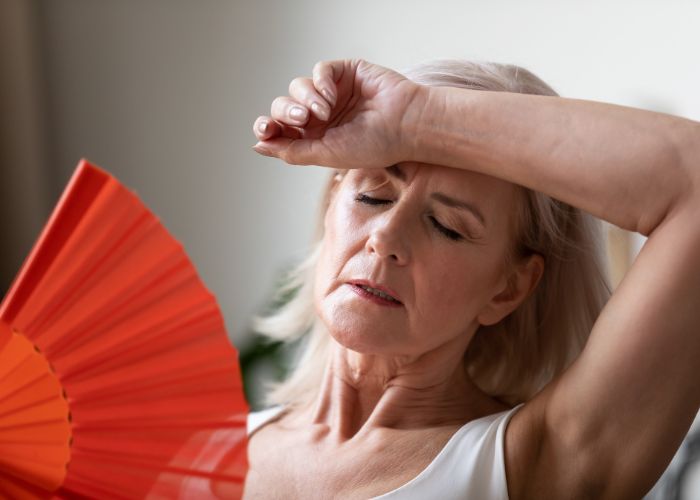
Hyperthermia
Hyperthermia is a condition where the body has an abnormally high temperature due to the body’s inability to regulate its internal temperature in relation to its environment.
Common forms of hyperthermia include heat fatigue, syncope (sudden dizziness after prolonged exposure to the heat), heat cramps, heat exhaustion, and heat stroke. A combination of environmental temperature, health, and lifestyle can increase the risk.
Lifestyle factors that may contribute to the risk of developing hyperthermia include not drinking enough fluids, living in housing without air conditioning, a lack of mobility, overdressing, visiting crowded places, and not knowing how to respond to hot weather.
Older people, especially those with chronic medical conditions, should stay indoors on hot and humid days, especially when an air pollution alert is in effect.
What Causes Hyperhermia?
Signs of Hyperthermia include heavy sweating, cold and pale skin that feels clammy, a rapid and weak pulse, nausea or vomiting, cramping muscles, fatigue or weakness, dizziness, and a headache.
Bodily temperatures greater than 37.5 to 38.3 °C (99.5-101.0 °F) can be diagnosed as a hyperthermic case.
The term Hypo means low and Hyper means high – this is another example of how we use the term for Diabetes.Hyperglycaemia
Hyperglycaemia is the medical term for a high blood sugar (glucose) level – a common problem for people with diabetes.
This can be caused by a variety of factors, such as not taking enough insulin or not exercising enough. Symptoms of hyperglycaemia can include increased thirst, increased urination, fatigue, blurred vision, and rapid breathing.
If left untreated, hyperglycaemia can lead to serious complications such as diabetic ketoacidosis, kidney failure, or stroke. It is important for people with diabetes to manage their blood sugar levels by taking their medications as prescribed, eating a healthy diet, exercising regularly, and monitoring their blood sugar levels.
With proper management, people with diabetes can help reduce their risk of developing hyperglycaemia and its associated complications.
Symptoms of Hyperglycaemia include:
- Increased thirst and a dry mouth.
- Needing to pee frequently.
- Tiredness.
- Blurred vision.
- Unintentional weight loss.
- Recurrent infections, such as thrush, bladder infections (cystitis) and skin infections.
Hypoglycaemia
A low blood sugar level, also called hypoglycaemia or a ‘hypo”‘ is where the level of sugar (glucose) in your blood drops too low, below 4mmol/l.
Hypoglycaemia is a serious condition and can be caused by a number of factors including diabetes, certain medications, excessive alcohol consumption, and insufficient food intake.
It is important to monitor your blood sugar levels and to take measures to ensure that your blood sugar remains at a healthy level.
This may include eating regular meals and snacks, getting enough exercise, and taking medications as prescribed by your doctor. It is also important to be aware of the signs and symptoms of hypoglycaemia and to seek medical assistance if necessary.
Symptoms of Hypoglycaemia include:
- Fast heartbeat
- Shaking
- Sweating
- Nervousness or anxiety
- Irritability or confusion
- Dizziness
- Hunger
Cold & Flu Prevention
The flu season is always a concern, particularly these past few years when it carries a greater risk.
It’s important to remember that cold and flu season has arrived in addition to the (still) ongoing COVID-19 pandemic. Keeping your family healthy is of utmost importance.
Both influenza and COVID-19 are contagious and with more children and teens staying indoors, the chances of getting either of these illnesses rises. Furthermore, some of the symptoms of both flu and COVID-19 overlap.

Common Cold Symptoms
Cold symptoms are usually less severe than those of the flu. People with colds are more likely to have a runny or blocked nose. Generally, colds don’t lead to serious health issues.
Common Flu Symptoms
The signs of flu can be fever, chills, coughing, sore throat, runny or blocked nose, body or muscle pain, headaches, and weariness.
How to distinguish symptoms between a cold and the flu:
| Signs/Symptoms | Cold | Flu |
|---|---|---|
| Onset | Gradual | Rapid |
| Fever | Rare | Common |
| Aches | Slight | Common |
| Chills | Uncommon | Common |
| Fatigue | Occasionally | Common |
| Sneezing | Common | Occasionally |
| Cough/Chest Discomfort | Mild to Moderate | Common |
| Stuffy Nose | Common | Occasionally |
| Sore Throat | Common | Occasionally |
| Headache | Rare | Common |
Vaccinations
With winter comes an increased risk of getting the flu and COVID-19.
Vaccinations are an effective and safe way to build up immunity to these illnesses, so it’s important to get vaccinated if you can.
The flu is not a pleasant experience for most people, but in some cases, it can be very dangerous or even life-threatening. The virus that causes the flu changes each year, so it’s important to get vaccinated every flu season.
The best time to get a flu vaccine is during the autumn months before the flu starts to spread.
More information can be found on the NHS Website.
Winter First Aid Measures
Outdoor First Aiders must make sure their First Aid Kits are prepared for winter, plus its vital that you are prepared for any situation that may arise.
Here are our tips on essential First Aid measures for the colder months:
Warmth: Insulation and shelter are the key points here. Warm clothing or a foil blanket are useful for wrapping around a casualty to protect them from the cold environment. Be mindful of the cold ground too.
Visibility: As the nights draw in, a light source is vital! This allows you to monitor the casualty at night, and the surroundings.
Emergency Communication: A torch can also be used to signal for help. The SOS pattern is short-short-short, long-long-long, short-short-short. If your torch doesnt offer this feature, you can cover the lens with your hand. A whistle can also help create an audio signal to attract someones attention.
Food: Bodies burn fuel (i.e. food) to generate heat so food can go a long way to maintaining a stable core temperature.
AEDs & Extreme Weather
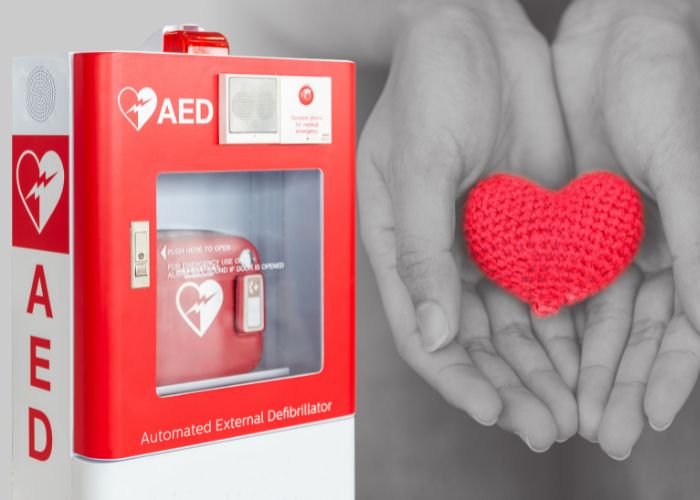
Extreme weather can affect the usability of an AED, as with any electronic device.
The cold weakens the power of an AED’s battery and can impair the adhesive pads’ ability to stick. To ensure your AED is in working order when needed, it is essential to store it correctly.
Most AEDs have an operating temperature range of 0°C to 50°C. However, you should consult your device’s operations manual to find out its exact range.
To maintain the operating temperature, store the AED in an insulated case, an appropriate outdoor cabinet, or, if possible, indoors.
Snow & Ice
1. Plan ahead
It is best to avoid travelling during periods of extreme weather, such as heavy snow, as it can affect roads and footpaths, causing traffic to move more slowly and driving conditions to be more dangerous.
If you do need to travel, make sure to plan your route and allow extra time to get to your destination safely. Before setting off, check for any delays or road closures, and make sure your vehicle wipers, tyres, and screen wash are in working order.
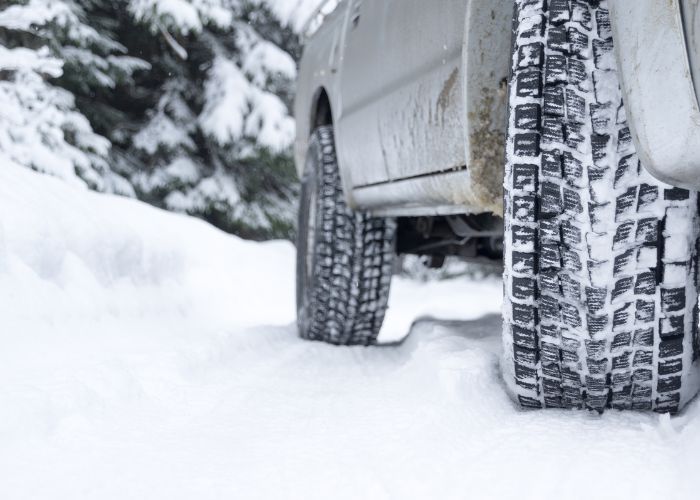
2. Drive safely in heavy snow
It is recommended to not drive in heavy snow or icy conditions. If it is necessary, make sure to accelerate gently, use low revs, and maintain a steady speed.
You should start in second gear to avoid skidding and shift to higher gears quickly. Keep a safe distance from other vehicles, maintain a steady speed when going uphill, and use a low gear when going downhill.
If you find yourself skidding, steer into the skid, keep your hands on the wheel, and do not slam the brakes.
3. Dress appropriately when walking
Be sure to dress warmly and wear shoes with rubber or neoprene soles, as they provide better traction than plastic or leather soles.
Avoid heels if possible, and opt for shoes with a flat bottom. For extreme weather, cleats or abrasive soles designed for walking on snow and ice are recommended.
4. Use special care when entering/leaving vehicles and buildings
When entering or leaving vehicles and buildings, take extra care and use handles and railings for support when available. When climbing into a vehicle, use caution as you shift your weight and hold onto the vehicle for support.
To avoid slipping, do not put your hands in your pockets!
5. Walk safely and use designated paths if possible
When walking, bend forward slightly and take short steps, keeping your centre of gravity above your feet. Stick to designated pathways, look ahead while walking, and avoid checking your phone.
If you do fall, try not to stretch out your arms, relax, and fall on fleshy areas like your thighs and buttocks. Bend your head forward to avoid hitting it, and try to roll as you hit the ground to reduce the impact.
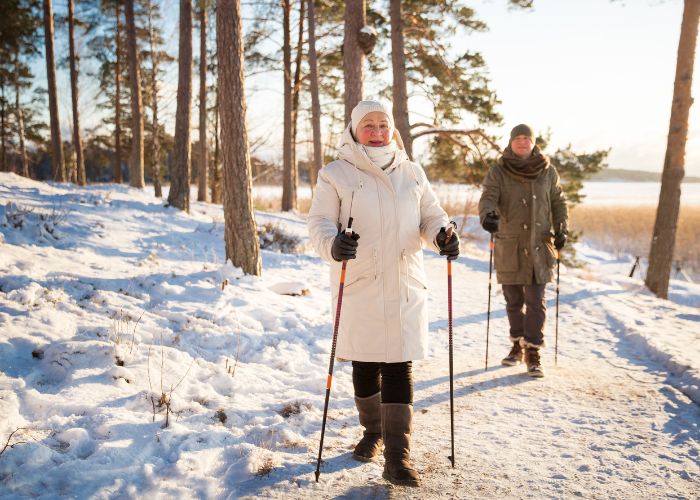
Key Takeaways
Winter can be a dangerous time of year, and it is important to be prepared for the cold weather and the outdoor activities it brings.
Make sure to have the right First Aid supplies and take measures to stay warm and healthy. Keep a First Aid Kit on hand with appropriate items, stay warm with multiple layers of clothing, and monitor for signs of hypothermia and hyperthermia.
Vaccinations can help prevent the flu and COVID-19, and it’s important to distinguish between symptoms of a cold and the flu.
Outdoor First Aiders should prepare their First Aid Kits for winter, and keep in mind tips for extreme weather, such as driving safely in snow, dressing appropriately when walking, and using special care when entering/leaving vehicles and buildings.
Keeping these tips in mind can help ensure you and your family stay safe this winter season!
Lightning Training Solutions First Aid Courses
Lightning Training Solutions offers a flexible and personalised approach to health and safety training. We provide practical and online courses to corporations and individuals in the UK.
Our service is available 24 hours a day, 7 days a week, and can be delivered to your premises.
Emergency First Aid at Work + Forestry (EFAW+F) Course
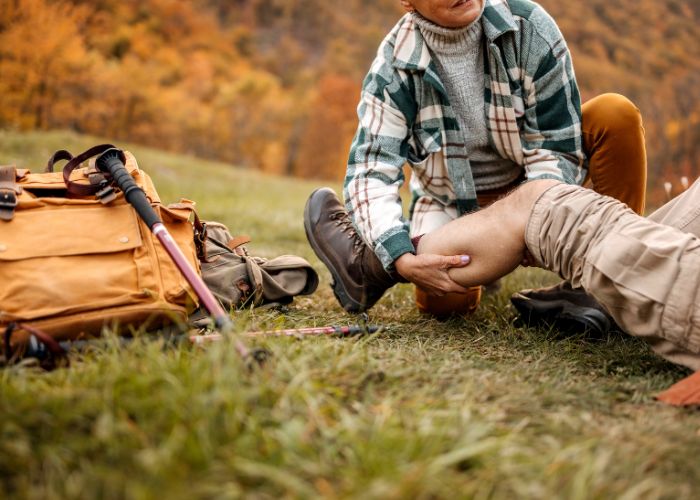
We are one of the very few in our region to offer Outdoor and EFAW/FAW F courses designed for outdoor working.
The EFAW+F course from Lightning Training Solutions is designed for those who are getting ready to become Emergency First Aiders in low-risk working environments on land owned by Forestry England (formerly the Forestry Commission). It is an excellent option for those who want to be prepared for any potential emergency.
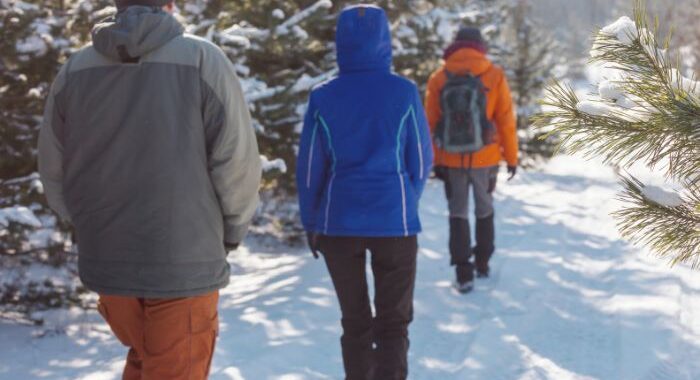
Pingback: Winter Workplace Hazards and How First Aid at Work Training Can Help - Lightning Training Solutions Blog
Pingback: Beyond the Bales: First Aid for Farmers (and Why Clarkson's Farm Proves It!)